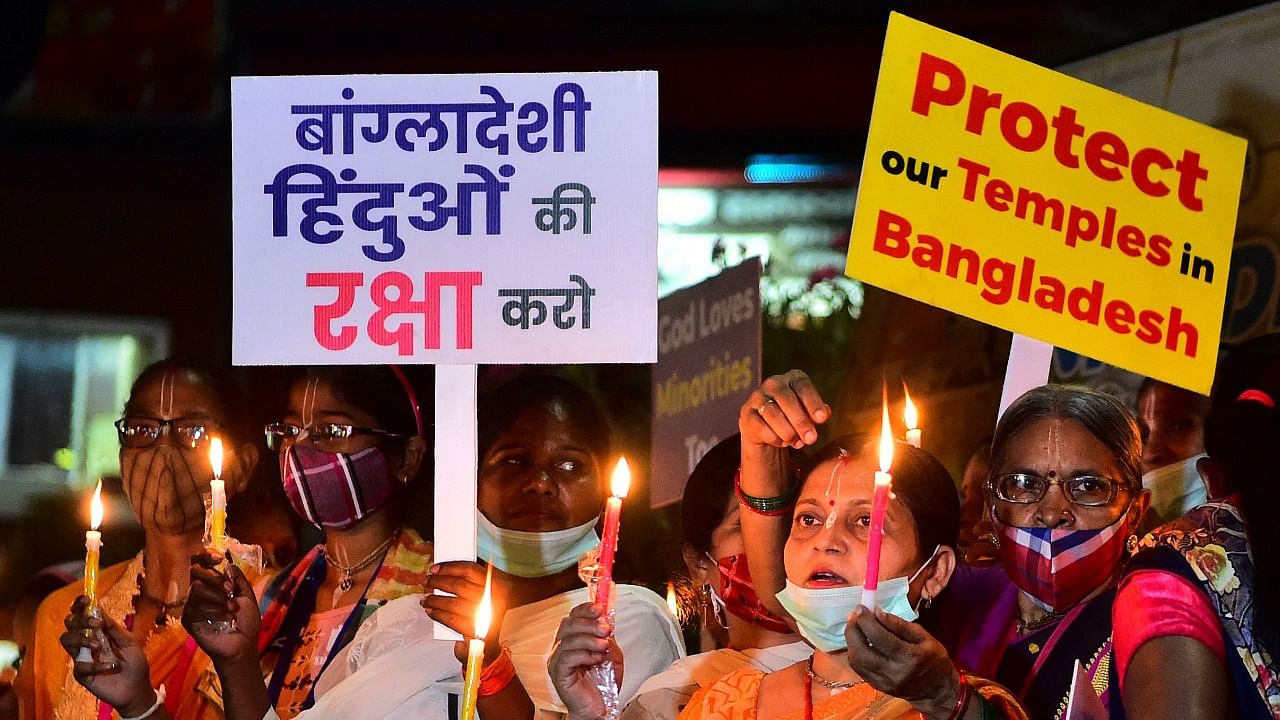
Within the space of a few days this month, communal rifts opened up across the subcontinent in dramatic fashion.
In Kashmir, almost a dozen civilians were killed within two weeks; militants targeted Hindus and Sikhs, triggering a massive exodus of minorities for the first time since the 1990s. In Bangladesh, Islamist fundamentalists attacked Hindu temples and torched hundreds of houses and businesses belonging to Hindus. Across India, Muslim businesses and meat shops were targeted ahead of Navratri.
There was also a bizarre epidemic of attacks against inter-faith couples and friends – including random people who were found talking to each other on the street. In Karnataka alone, there were at least 11 separate incidents within the month. A Muslim man was beheaded by a Hindu militant group for falling in love with a Hindu girl. A Hindu man was harassed for dropping off a female Muslim colleague home. A Muslim man and a Hindu woman who were riding together on a bike were stopped and threatened.
Journalists and commentators often call these instances of “moral policing”, but it is far more sinister than that. Ethnic cleansing is already happening on a localised scale across the region. The persecution of Shias in Pakistan has been going on for years. The resurgence of the Taliban has endangered the lives of Hazaras in Afghanistan. In India, there are villages in parts of Uttar Pradesh and Madhya Pradesh where Muslims have been driven out almost completely through sustained violence against them. The same thing is now almost complete in Kashmir: According to some reports, about a third of the Pandits who had arrived in Kashmir under various schemes during the 2000s have left in the last few days.
The violence is abhorrent, but there is one critical problem exposed by these incidents: It’s becoming increasingly difficult for South Asians to rally together or mobilise against religious fundamentalism because it is far too varied. Ethnic cleansing in South Asia isn’t as simple, if horrific, as Jews being thrown into concentration camps nationwide, as in Germany in the 1930s. It is localised, and the victims are of different identities in different places, depending on which community is dominant.
On their part, religious extremists take full advantage of the subcontinent’s diversity. In Pakistan and Bangladesh, majoritarian politics casts Hindus as the enemy, and in India, it casts Muslims as the enemy.
Attacks on Hindus in Bangladesh are used as justification for the oppression of Muslims in India – and vice versa. In the last few days, Hindutva ideologues have defended the discriminatory Citizenship Amendment Act (CAA) by citing the ongoing violence against Hindus in Bangladesh (though the CAA does nothing for any victim who arrives in India after 2014). Meanwhile, Islamists in Bangladesh have cited such discriminatory Indian laws to rile up anger against Hindus in that country (it’s convenient because the BJP has claimed that India is the “natural home” of Hindus).
South Asia’s misfortune is that Hindu and Muslim religious extremists are pitted on supposedly “opposite sides” – though they often pursue the same ends in their respective strongholds. The war is conveniently dressed as being between Hindus and Muslims, rather than as between religious extremists and everybody else.
Civil society activists, liberal voices and secular politicians across the subcontinent must reframe the “Hindu versus Muslim” problem as a clash of values: religious extremism versus civility. Unless there is more broad-based political mobilisation and leadership bold enough to reject religious identity politics, South Asia will have to brace itself for ever more communal conflict – and millions of refugees, too, going in all directions.